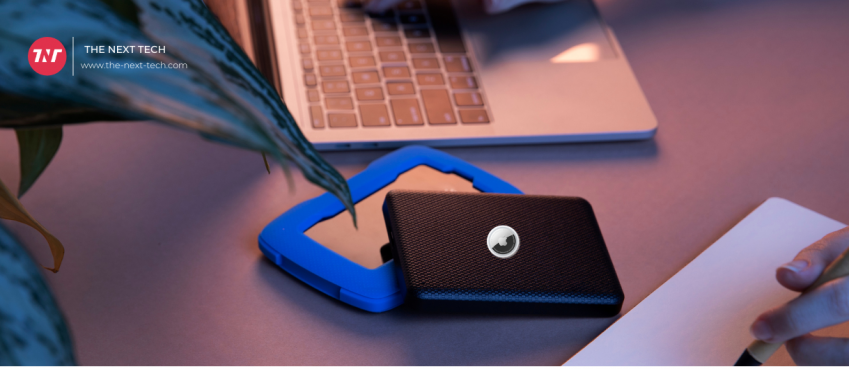
Apple keeps heavily investing in macOS security features, making cyberattacks more difficult, but not impossible.
Due to its Unix-based architecture and native encryption options, macOS has long been considered a more secure option than Windows. On the other hand, with the sharp increase of Mac adoption rates in enterprises and Apple’s growing market share, the number of Mac-targeted attacks are getting more common.
macOS Big Sur, Apple’s latest operating system, introduced important privacy and security features, including a transition from kernel extensions to system extensions that execute code in a controlled user-space.
An extra layer of security has been thus added, eliminating a popular attack vector for macOS. On the other hand, the company’s new Arm-based M1 processors promise to ensure security not only from the software but the hardware side too.
Risks caused by insiders and working from home
However, from a data protection perspective, system vulnerabilities are often not the weakest link, but the people who are using the data.
This means that data is not only vulnerable to attacks caused by outsiders but also to malicious intentions and the negligence of insiders. Breaches caused by insider attacks or human error are quite common and pose a severe threat regardless if the computer is macOS, Windows, or Linux-based.
Even in the case of outsider interference, many data breaches happen because employees fall for social engineering or phishing attacks and unintentionally reveal their credentials or sensitive company information.
The era of work-from-home has also created new security threats, regardless of the operating system. Data saved and stored locally on a hard drive for work-related reasons are vulnerable to leaks and theft even if it is’ a macOS device.
Employees working from home can become less vigilant, and the software that would usually enforce company data protection policies may not work remotely or when a Mac is offline. This means that anyone with access to the computer can easily copy files on removable devices or connect infected devices to it.
By allowing such vulnerabilities to persist, companies risk not only data breaches and reputational damage but also non-compliance with data protection regulations and standards such as the Payment Card Industry Data Security Standard (PCI-DSS), the Health Insurance Portability and Accountability Act (HIPAA), and the California Consumer Privacy Act (CCPA) involving heavy penalties.
Also read: Everything You Need To Know About Magic School AI
Why is a DLP solution necessary?
The risks mentioned above can be significantly diminished by deploying a Data Loss Prevention (DLP) tool for macOS devices, helping companies protect their data from internally-caused breaches.
DLP solutions such as Endpoint Protector by CoSoSys can monitor and control a company’s most sensitive data, support their compliance efforts with data protection regulations, and mitigate insider threats.
When it comes to macOS computers, few DLP products on the market have shown their commitment as Endpoint Protector has, by ensuring compatibility at all times, whenever there is an upgrade or new developments in Apple’s operating system.
Let’s have a more in-depth look at why DLP solutions are important for macOS devices:
Protecting PII and IP
Data has become an important asset, that cannot be overlooked anymore. Personally Identifiable Information (PII) is protected under a new wave of regulations such as the CCPA and the EU’s General Data Protection Regulation (GDPR).
Safeguarding PII and meeting compliance requirements is paramount for a company’s reputation, as well as for avoiding hefty fines. Another important category of data for an organization’s well-being is Intellectual Property (IP), including business plans, trade secrets, and know-how.
The best DLP solutions on the market come with predefined policies for the most common types of protected data, such as PII. They also allow companies to define what sensitive data means to them by providing the option to customize DLP policies and apply them to IP. DLP solutions can keep track of sensitive information, block or log its transfer, delete or encrypt it when found on the Macs of unauthorized users.
Monitoring portable storage devices
Removable devices are an easy pathway for both data loss and device infection. USBs, in particular, have been for a long time a blind spot in data protection strategies as they are easy to conceal, steal, and lose.
DLP solutions with Device Control options for macOS endpoints come with the possibility of monitoring and controlling the USB and peripheral ports of a Mac, limiting their use to trusted devices or blocking their use altogether.
Also read: Top 10 Web Hosting Companies in 2021 | Detailed Review
Mitigating insider threats
Insider threats need to be addressed with proper tools and policies on macOS devices too; otherwise, data leakage, data loss, or data theft can easily happen.
DLP solutions are meant to discover sensitive data, address data loss across multiple channels, prevent unintentional data disclosure, and offer remediation actions. By offering data visibility and protecting sensitive categories of data directly, DLP software can significantly reduce the risks of insider threats.
Endpoint Protector for example prevents data from leaving company networks through a variety of exit points, including web browsers, e-mail clients, instant messaging applications, transfer to the cloud, and more. Its policies remain active whether a company computer is online or offline, thus sensitive data is controlled and monitored at all times.
Also read: Walmart Money Card Review: Good Or Bad?
How to choose a DLP for macOS devices?
When choosing a DLP solution for Mac endpoints, companies must take extra care. With the release of macOS Big Sur, Apple has started deprecating kernel extensions, thus tools for Macs should use system extensions. Another essential feature to consider is zero-day support, which guarantees a solution will be tested for compatibility with a new macOS version before its public release.
As most enterprises run a multi-operating system network, they should opt for a cross-platform DLP that can protect data on both Apple Macs and Microsoft PCs, as having multiple solutions can prove a time-consuming and complicated task.
When choosing one, it’s important to check if the solution offers the same level of protection for Macs as they do for Windows-running computers. Before purchasing a cross-platform DLP solution, companies must test it and ensure that it provides feature parity, coming with the same tools for Macs as it does for other operating systems.
Top 10 News
-
01
[10 BEST] AI Influencer Generator Apps Trending Right Now
Monday March 17, 2025
-
02
The 10 Best Companies Providing Electric Fencing For Busines...
Tuesday March 11, 2025
-
03
Top 10 Social Security Fairness Act Benefits In 2025
Wednesday March 5, 2025
-
04
Top 10 AI Infrastructure Companies In The World
Tuesday February 11, 2025
-
05
What Are Top 10 Blood Thinners To Minimize Heart Disease?
Wednesday January 22, 2025
-
06
10 Top-Rated AI Hugging Video Generator (Turn Images Into Ki...
Monday December 23, 2024
-
07
10 Top-Rated Face Swap AI Tools (Swap Photo & Video Ins...
Friday December 20, 2024
-
08
10 Exciting iPhone 16 Features You Can Try Right Now
Tuesday November 19, 2024
-
09
10 Best Anatomy Apps For Physiologist Beginners
Tuesday November 12, 2024
-
10
Top 10 Websites And Apps Like Thumbtack
Tuesday November 5, 2024







